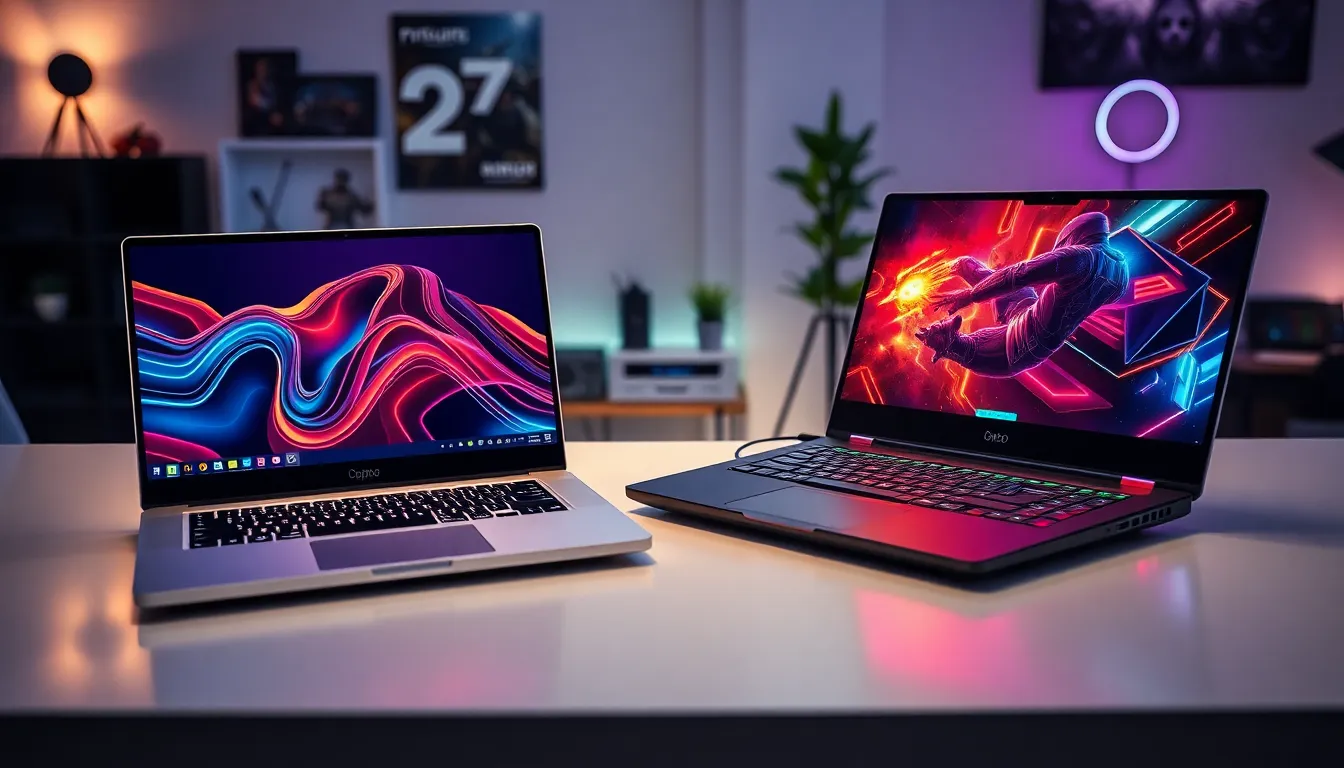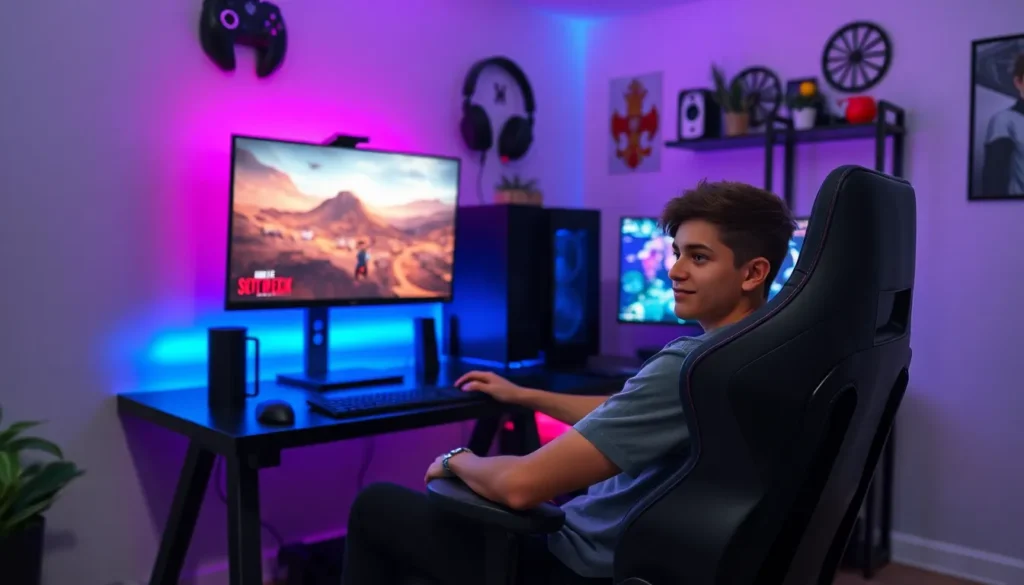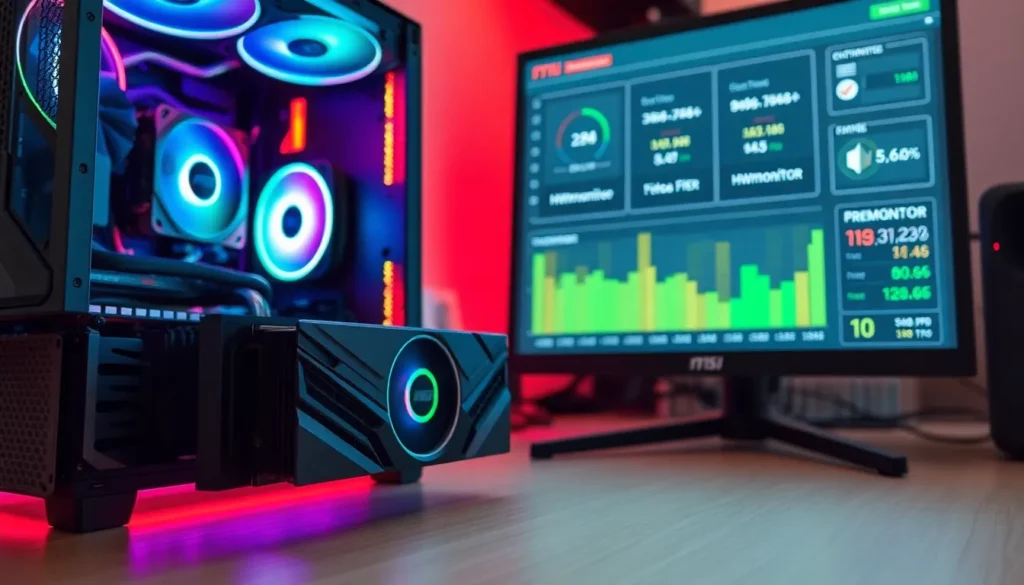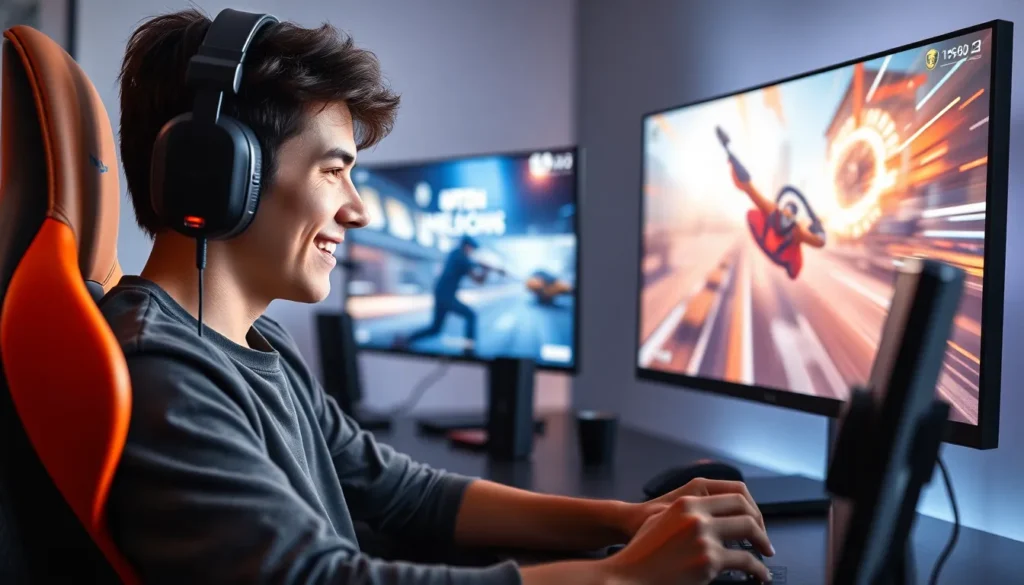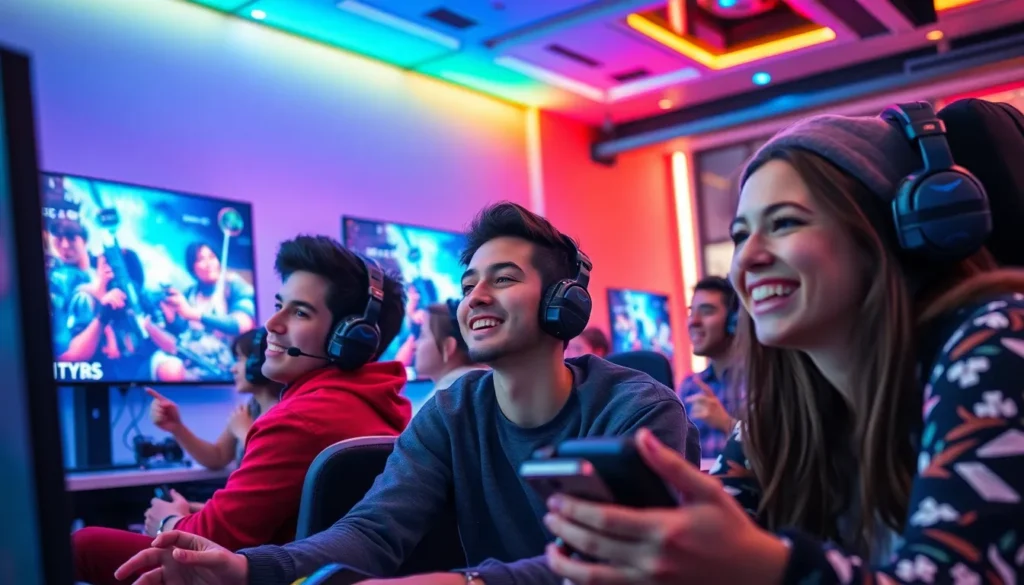In the battle of tech titans, ultrabooks and gaming laptops face off like two heavyweight champions. On one side, you have the sleek and stylish ultrabook, perfect for professionals who want to look good while typing away at spreadsheets. On the other, the gaming laptop, a powerhouse designed to crush virtual enemies and handle the latest graphics with ease.
Overview of Ultrabooks
Ultrabooks combine sleek design with high functionality. They cater to professionals and users seeking portability without sacrificing performance.
Key Features of Ultrabooks
Ultrabooks emphasize lightweight construction, often weighing under 3 pounds. Their thin profiles typically measure less than 0.8 inches in thickness. Battery life stands out, with many models offering over 10 hours of use on a single charge. Fast boot times are ensured through solid-state drives (SSDs), providing users with quick access to applications. Additionally, ultrabooks often feature high-resolution displays, enhancing visual clarity for various tasks.
Popular Ultrabook Models
Some well-known ultrabook models include the Dell XPS 13 and the Lenovo Yoga Slim 7i. The HP Spectre x360 offers versatility with its 2-in-1 design. Additionally, Apple’s MacBook Air remains a favorite due to its performance and battery efficiency. Other notable options include the ASUS ZenBook series, known for its stunning displays and robust performance. Each model presents unique features that appeal to different user preferences.
Overview of Gaming Laptops

Gaming laptops excel in delivering high-performance capabilities specifically for gamers. These devices provide exceptional graphics, fast processing, and ample storage.
Key Features of Gaming Laptops
Gaming laptops include advanced processors, often Intel Core i7 or AMD Ryzen 7, essential for handling intensive applications and games. Graphics cards like NVIDIA GeForce RTX 3060 or higher enhance visual experiences, enabling smooth gameplay at high settings. Their design features customizable RGB keyboards, enhancing the gaming aesthetic. Also, efficient cooling systems prevent overheating during extended play sessions. Battery lives typically range from 4 to 8 hours, depending on usage. Displays often support high refresh rates, improving responsiveness in fast-paced environments.
Popular Gaming Laptop Models
Notable gaming laptop models include the Razer Blade 15, recognized for its sleek design and robust performance. The ASUS ROG Zephyrus G14 stands out with its portable form factor and powerful AMD chipset. Dell’s Alienware X17 attracts users seeking a premium gaming experience with customizable features. HP Omen 15 offers a balance of performance and affordability. Each model caters to different gaming preferences and budgets, ensuring options for every gamer.
Performance Comparison
Performance plays a crucial role in distinguishing ultrabooks from gaming laptops. Both devices cater to different user needs based on processing power and graphics capabilities.
Processing Power
Ultrabooks typically feature processors like Intel Core i5 or i7, delivering adequate performance for everyday tasks. Such processors handle multitasking efficiently, making ultrabooks suitable for professionals and students. In contrast, gaming laptops often integrate more powerful processors, such as Intel Core i7 or AMD Ryzen 7. These processors enable seamless gaming experiences, supporting demanding applications and high frame rates. Enthusiasts appreciate the extra processing power offered by gaming laptops, which often include overclocking options. Consequently, users requiring high performance for gaming or content creation prefer gaming laptops for their superior processing capabilities.
Graphics Capabilities
Ultrabooks utilize integrated graphics, which suffice for business applications and casual activities. Graphics performance remains limited in ultrabooks, often falling short for intensive gaming or graphic design tasks. Gaming laptops, however, are equipped with dedicated graphics cards, like NVIDIA GeForce RTX 3060 or higher, offering exceptional visual experiences. These dedicated graphics capabilities enhance gameplay by providing higher frame rates and improved resolutions. Gamers benefit from options to upgrade graphics cards, ensuring longevity and compatibility with future titles. Thus, gaming laptops stand out for their ability to handle visually demanding applications.
Portability and Design
Portability and design play vital roles in selecting between an ultrabook and a gaming laptop.
Weight and Size
Ultrabooks focus on slim profiles and lightweight design. Many models weigh under 3 pounds and are less than 0.8 inches thick. Such specifications make them ideal for professionals and students who need portability. In contrast, gaming laptops tend to be bulkier due to enhanced hardware. Most gaming laptops range from 4 to 6 pounds, requiring more space. These dimensions can hinder mobility, particularly for users constantly on the go. Additionally, their design features often cater to aesthetics with aggressive lines and RGB lighting. Choosing the right device depends heavily on personal mobility needs.
Battery Life
Battery life drastically varies between ultrabooks and gaming laptops. Ultrabooks often exceed 10 hours on a single charge, making them suitable for long work hours and travel. This endurance results from efficient processors and power management technologies. Gaming laptops, however, typically offer 4 to 8 hours of battery life under standard use. Intensive gaming sessions can significantly reduce this duration. Many gamers connect their laptops to power sources during play. High-performance graphics cards in gaming laptops consume more energy, impacting overall battery longevity. Understanding how each device’s battery life aligns with usage needs is crucial in making an informed choice.
Price Range
Pricing significantly influences the decision between choosing an ultrabook and a gaming laptop. Each category comes with its own cost dynamics worthy of consideration.
Cost of Ultrabooks
Ultrabooks typically range from $800 to $2,000. Models like the Dell XPS 13 and HP Spectre x360 lie within this price range, offering premium features for professionals. Often, entry-level ultrabooks start at around $800, appealing to students and budget-conscious users. Performance improves with higher-priced models that include advanced specifications like enhanced display resolutions and longer battery life. In general, consumers pay for the lightweight design and portability that ultrabooks provide, making them attractive to those seeking stylish, functional devices.
Cost of Gaming Laptops
Gaming laptops usually start at $1,000, with premium models reaching up to $3,500. The Razer Blade 15 and ASUS ROG Zephyrus G14 stand out as popular choices in this arena. Entry-level gaming laptops, priced around $1,000, often include decent graphics and processing power. More expensive options typically feature high-end graphics cards, substantial RAM, and ultra-fast processors, which cater to demanding gaming needs. Gamers invest in these machines for the performance and capabilities that elevate their gaming experience.
Choosing between an ultrabook and a gaming laptop ultimately hinges on individual needs and preferences. For those who prioritize portability and battery life while balancing productivity and style, ultrabooks stand out as the ideal choice. Their lightweight design and impressive functionality cater to professionals and students alike.
On the other hand, gamers and content creators who demand high performance and advanced graphics will find gaming laptops more suited to their requirements. With powerful hardware and dedicated graphics capabilities, these machines deliver an unparalleled gaming experience.
Understanding these distinctions ensures that users can select the device that best aligns with their lifestyle and usage scenarios, making an informed investment in their tech arsenal.

